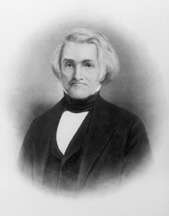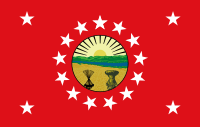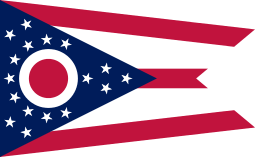Jeremiah Morrow
| Jeremiah Morrow | |
|---|---|
 | |
| United States Senator from Ohio | |
|
In office March 4, 1813 – March 4, 1819 | |
| Preceded by | Alexander Campbell |
| Succeeded by | William A. Trimble |
| 9th Governor of Ohio | |
|
In office December 28, 1822 – December 19, 1826 | |
| Preceded by | Allen Trimble |
| Succeeded by | Allen Trimble |
| Member of the U.S. House of Representatives from Ohio's at-large district | |
|
In office October 17, 1803 – March 3, 1813 | |
| Preceded by | District created |
| Succeeded by | District eliminated |
| Member of the U.S. House of Representatives from Ohio's 4th district | |
|
In office October 13, 1840 – March 3, 1843 | |
| Preceded by | Thomas Corwin |
| Succeeded by | Joseph Vance |
| Member of the Ohio Senate from Hamilton County | |
|
In office 1803 | |
| Preceded by | new district |
| Succeeded by |
John Bigger William C. Schenck Daniel Symmes William Ward |
| Personal details | |
| Born |
October 6, 1771 Gettysburg, Pennsylvania |
| Died |
March 22, 1852 (aged 80) Lebanon, Ohio |
| Nationality | Scots-Irish |
| Political party | Democratic-Republican |
| Wikimedia Commons has media related to Jeremiah Morrow. |
Jeremiah Morrow (October 6, 1771 – March 22, 1852) was a Democratic-Republican Party politician from Ohio. He served as the ninth Governor of Ohio, and the last Democratic-Republican to do so.
Biography
Morrow was born near Gettysburg, Pennsylvania, to the descendants of Scots-Irish immigrants. He moved to the Northwest Territory in 1795. He lived at the mouth of the Little Miami River for a short time before moving to what is now Warren County.[1] As a member of the Associate Reformed Presbyterian Church, he sought the services of a minister of his denomination soon after settling in the region, and he was one of the original elders of the Mill Creek congregation when it was organized shortly before 1800.[2]
After serving in the Territorial House of Representatives and Territorial Senate, and as a Hamilton county delegate to the 1802 Constitutional Convention,[3] he was elected to the first State Senate a year later and served six months before becoming Ohio's first member of the United States House of Representatives. Morrow won four additional full terms. He ran for the U.S. Senate in 1812 and served a single term from 1813 to 1819, and did not seek re-election. Morrow was elected a member of the American Antiquarian Society in 1814.[4] In 1820, he served as one of Ohio's Presidential electors for James Monroe.[5] He won election to the governorship in 1822 and served for two two-year terms. He declined to serve a third term, instead returning to the Ohio House of Representatives and State Senate. Morrow was sent back to Washington again in 1841, and served two more years in the House, but refused to be renominated in 1842, believing himself too old.
Death and legacy
After retiring from politics, Morrow returned to his farm and gristmill in Warren County. Morrow was buried in Union Cemetery in Loveland, Ohio.[6]
Morrow is the namesake of the Jeremiah Morrow Bridge, the highest bridge in Ohio. Morrow County and Morrow, Ohio are named after him. His grandson, George E. Morrow, was a professor at the University of Illinois and Iowa State University, and was president of Oklahoma State University.
References
- ↑ Ryan, Daniel J (1888). A History of Ohio with Biographical Sketches of her Governors and the Ordinance of 1787. Columbus, Ohio: A H Smythe. pp. 175–176.
- ↑ History of Cincinnati and Hamilton County, Ohio: Their Past and Present. Vol. 1. Cincinnati: S.B. Nelson, 1894, 458.
- ↑ "First Constitutional Convention, Convened November 1, 1802". Ohio Archaeological and Historical Publications. V: 131–132. 1896.
- ↑ American Antiquarian Society Members Directory
- ↑ Taylor, William Alexander; Taylor, Aubrey Clarence (1899). Ohio statesmen and annals of progress: from the year 1788 to the year 1900 ... 1. State of Ohio. p. 102.
- ↑ "Jeremiah Morrow". Find A Grave. Retrieved July 27, 2012.
External links
- United States Congress. "Jeremiah Morrow (id: M001003)". Biographical Directory of the United States Congress.
![]() "Morrow, Jeremiah". Appletons' Cyclopædia of American Biography. 1900.
"Morrow, Jeremiah". Appletons' Cyclopædia of American Biography. 1900.



